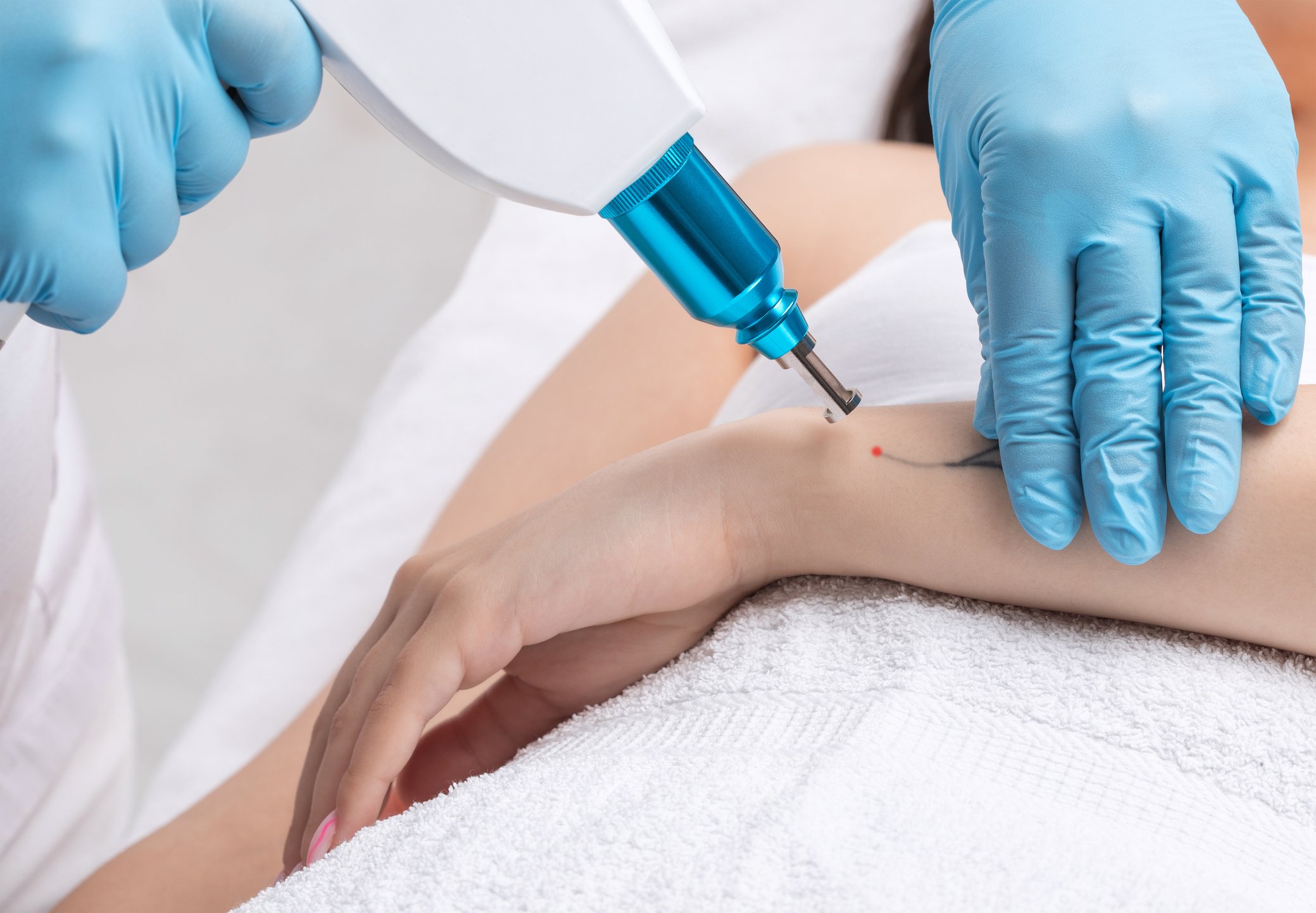Many people have made a mistake, at some point in their life, of getting ink that they now regret. If you have a tattoo or multiple tats that you now wish you could erase from your body, here’s the good news — that process can now be completed thanks to the technology of laser tattoo removal. Still, only some people know about it today, and the public should be more aware that this is an available option to mend past mistakes. Whether it’s a butterfly on your lower back or an homage to an ex-lover, there are many reasons why you might want to kick that tattoo to the curb. Here are the most commonly asked questions when it comes to laser tattoo removal — find out everything you need to know below.
How does laser tattoo removal work?
Many people think that removing tattoos via lasers is complicated, but it’s actually not. The laser is used on the tattoo, destroying colored ink with laser light. When tattoo removal laser light is applied to the skin, it heats up, shattering the ink that it reaches first within the skin. The shallowest layers of ink are removed, and then the deeper layers after that. This involves multiple treatments to fully penetrate the entire tattoo depth. After each treatment, the color will be noticeably faded.
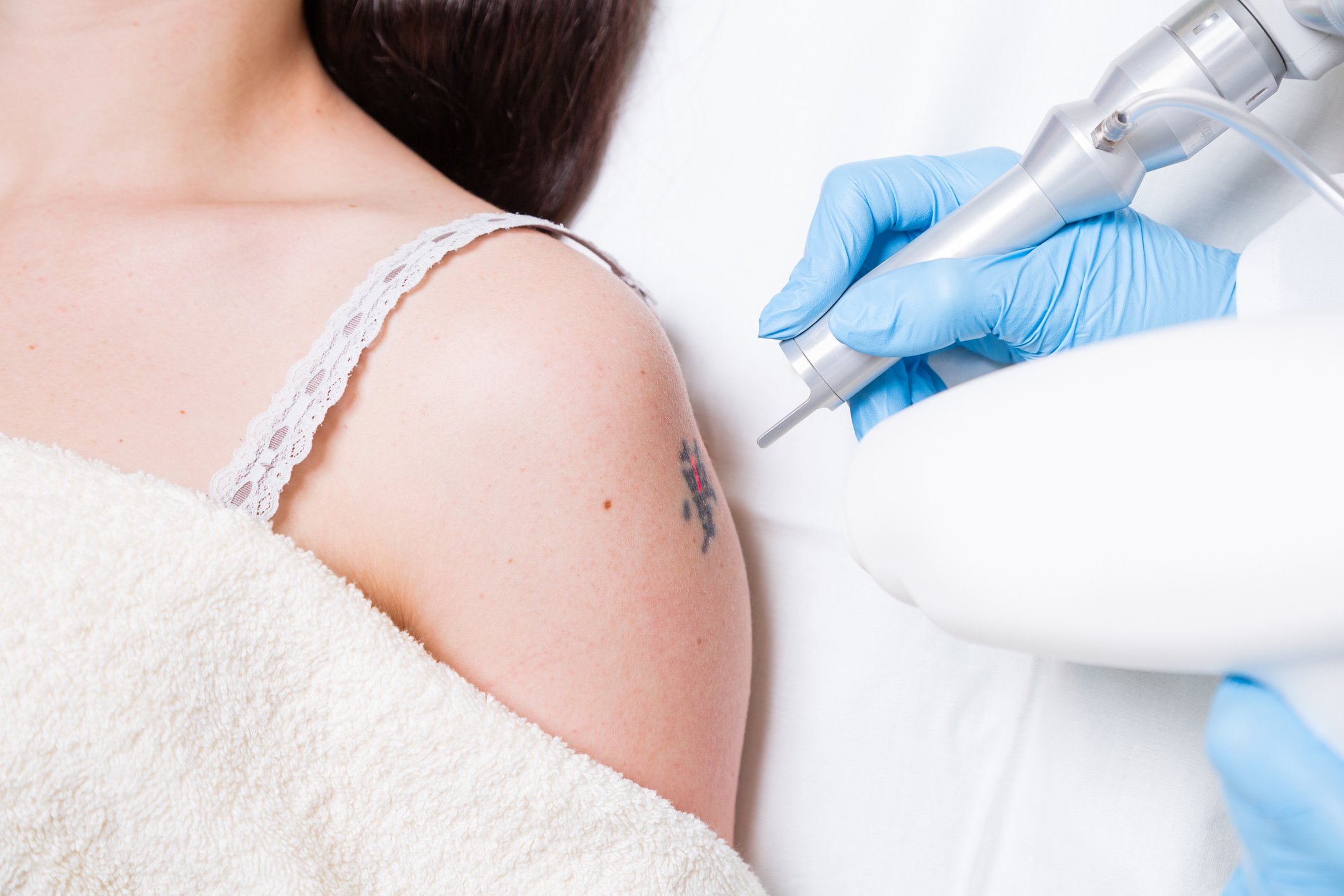
How much time does it take to remove a tattoo?
This time differs for everyone based on a range of factors, including the amount of color in the tattoo, the size, location and the ability of the person’s body to reject the ink. Generally, a minimum of five to eight sessions are required. Some people may see drastic differences within three or four sessions, although bigger, more significant tats may require up to 12 sessions. After each laser treatment, you’ll need a month to six weeks to properly recover. Fortunately, sessions are short and don’t last very long.
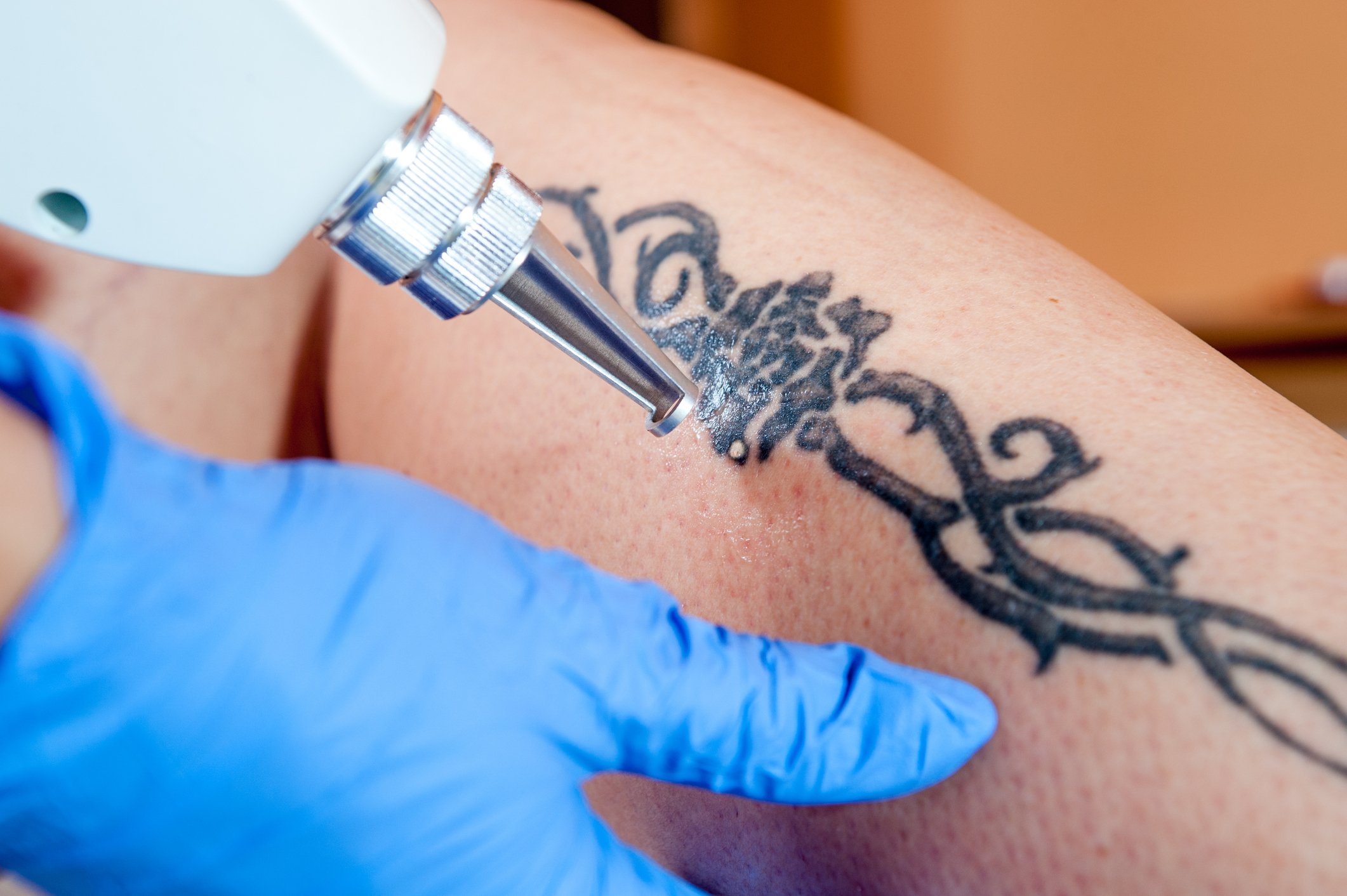
Is laser tattoo removal painful?
People generally don’t feel too much discomfort or pain. It’s a lot less painful than getting the actual tattoo. Some procedures are even as short as 30 seconds, and most people who have received them found them to be slightly uncomfortable but tolerable. It feels like a rubber band broken against the skin, according to some people. Plus, technicians usually use a numbing agent or cooling device before, during or after the treatment.

How much is the cost of tattoo removal?
Unfortunately, this procedure isn’t cheap, especially when it comes to the cost of getting a tattoo done. There are multiple sessions that need to get paid for, but small removals may only cost $75-125 per session. Many places offer special pricing or discount packages, so don’t be scared off by the initial price. Get consults and quotes to see what is the best choice for you. And the relief you feel afterward may be the best investment you’ll ever make.
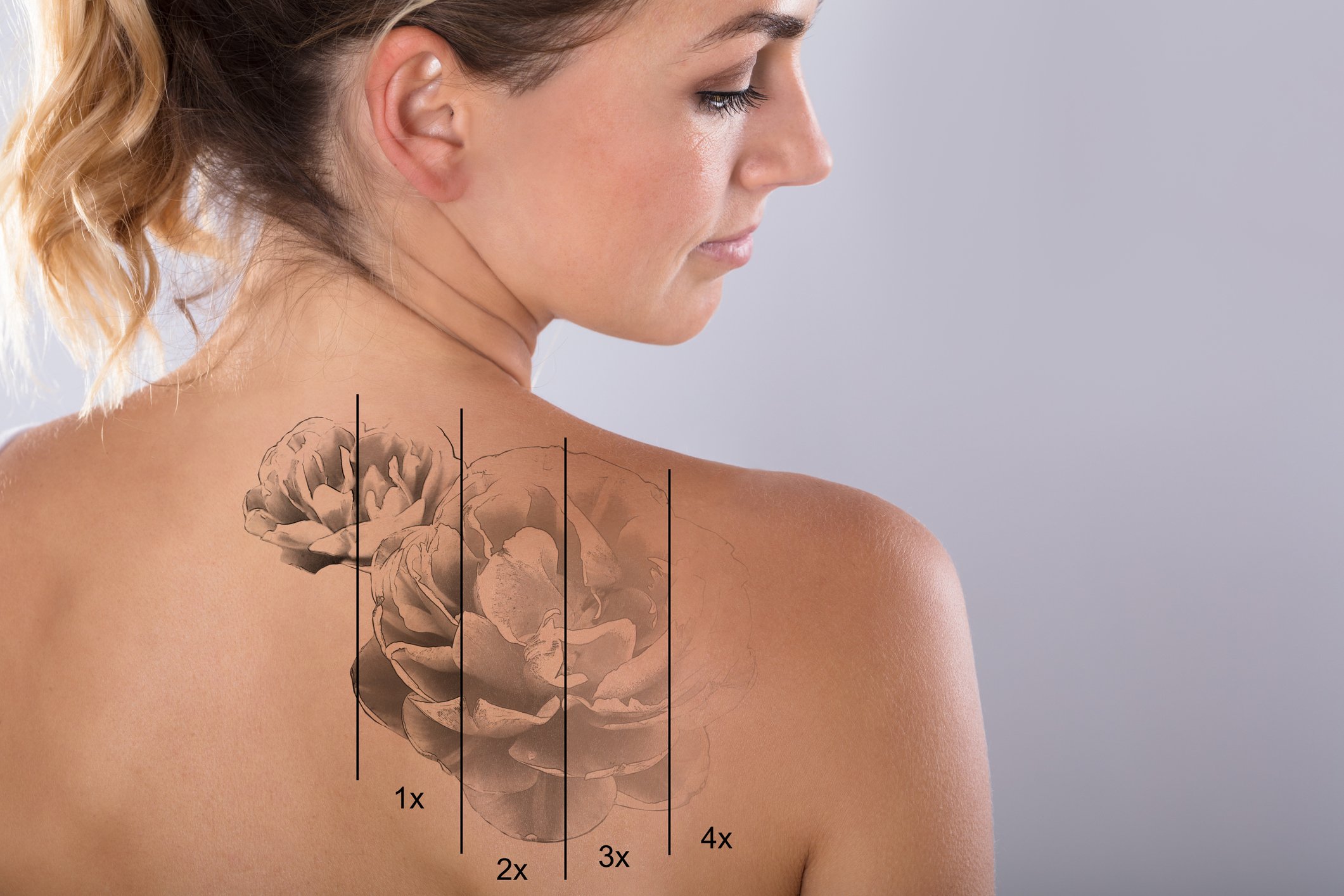
Is laser tattoo removal suitable for you?
If you can afford it and consider the fact that removal isn’t too painful, it’s a great way to restore your skin to its post-tattoo status and get that undesired ink off your body. Today, the market for removal is also more competitive today, due to increased competition so it’s more readily available and you can get a wider range of estimates from professionals nearby.
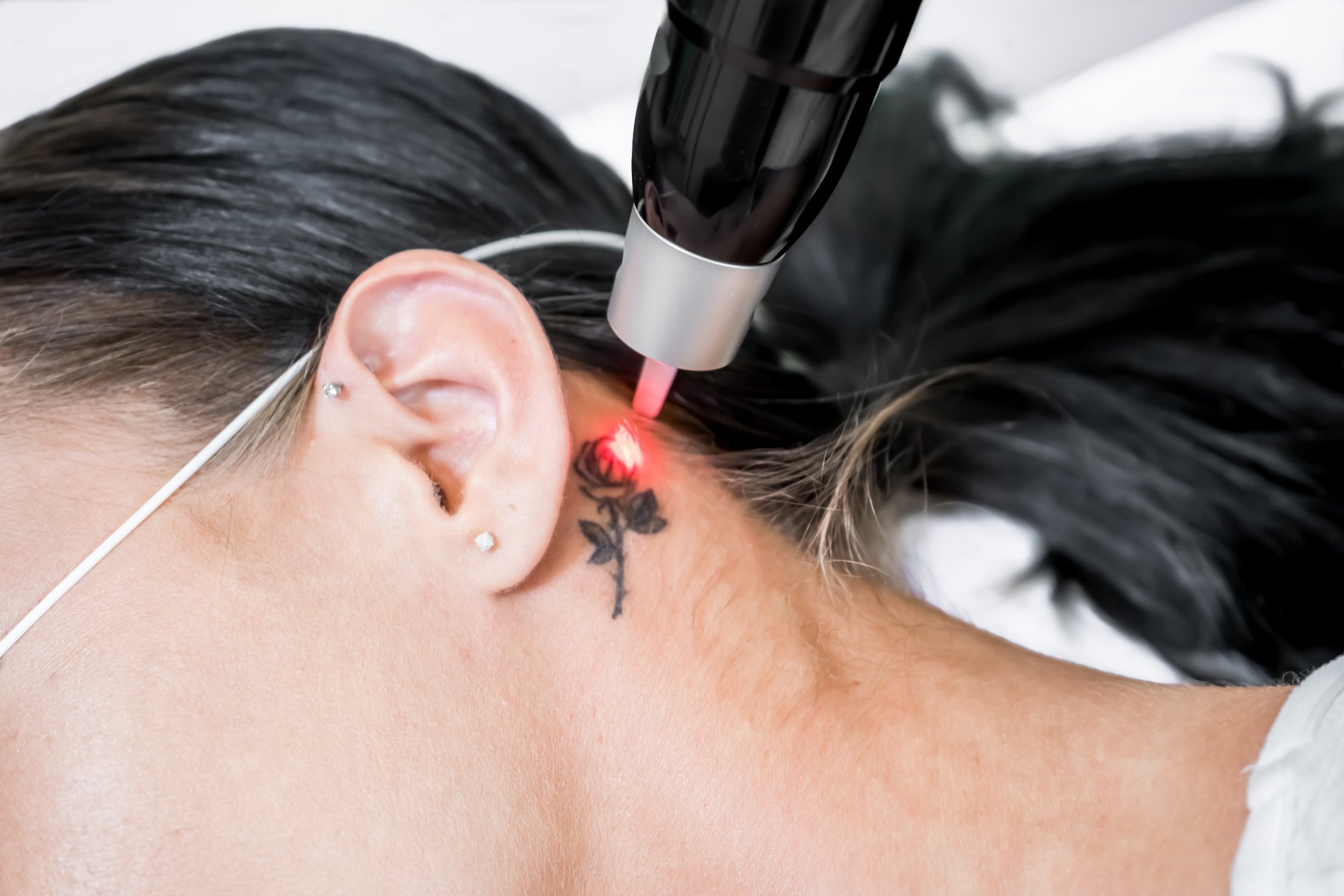
Does laser tattoo removal leave a scar?
With high-quality lasers, a scar shouldn’t be left. But the result will still depend on several things. Firstly, if there was preexisting scarring, it will still be there after your laser treatment. The kind of laser used has a major effect. While older laser tech removes the pigment of the skin along with tattoo ink, today, most professionals use a Q-switched laser, which prevents hyperpigmentation and scarring from occurring. These lasers have the ability to target pigment in the tattoo ink without damaging the dermis layer. Always do your research and opt for a clinic with Q-switched lasers rather than general lasers.
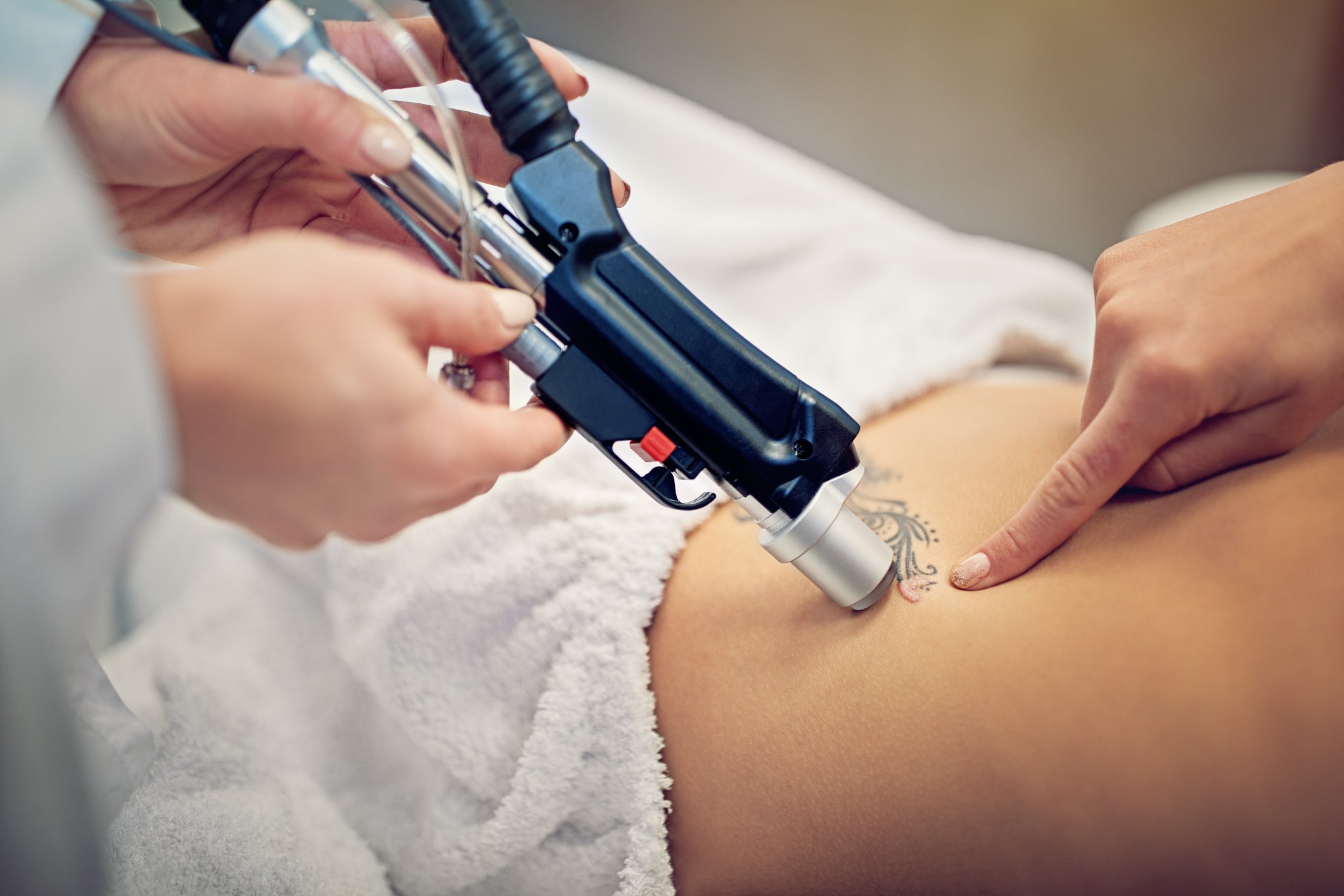
Does laser tattoo removal have any side effects?
Mild side effects include slight swelling, redness, and a stinging feeling around the area that feels similar to a sunburn. It can last from minutes to hours. Sometimes, side effects can include scabbing or blisters which should not be touched. Bruising may also develop at the site as the skin heals. If you don’t experience a big visible difference after the first treatment, it’s because the ink first penetrates the deepest layers of the epidermis.
